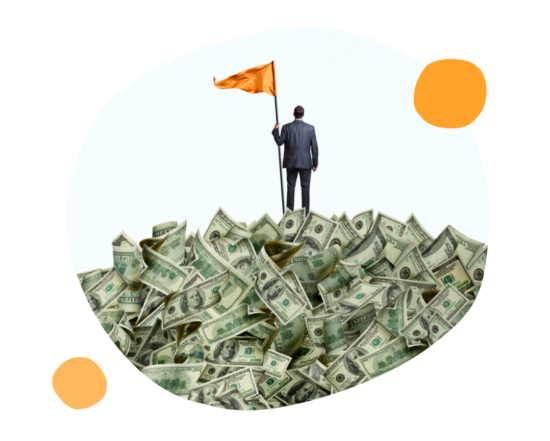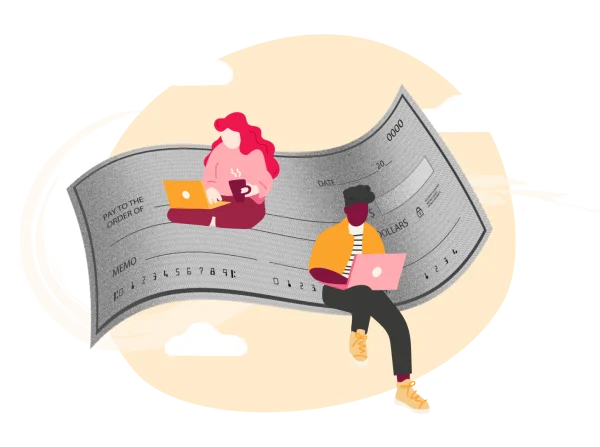As HR professionals, we always say people are our most important asset.
And that’s not just a saying—it’s a proven business truth. Without people constantly bringing their creativity, determination, and collaborative spirit to the table, many organizations simply wouldn’t be where they are today.
But in this age of rocky markets, high inflation, and an unpredictable global economy, people-centric programs—or the people themselves—are often the first to go when it comes to cutting down on business costs.
The question though, is does the cost saved outweigh the cost of diminished talent, engagement, and potential long-term growth?
In this guide, we’ll take you through the benefits and ROI of the specific people-centric programs that many companies cut when budgets get tight.
We’ll explain why, when analyzed closely, these programs can be directly correlated to productivity and profitability, and why trimming these programs isn’t just an oversight. It can be a detrimental business decision.

The tangible benefits of building a cohesive workplace culture
For any organization, fostering a robust, inclusive, and cohesive company culture is vital. But while it’s one thing to have a defined culture, it’s another thing completely to actively build an environment that upholds and regularly acts on that culture.
The key is to invest in employee engagement. Work happy hours, meet and greets, team bonding events, rewards and recognition—these types of social programs play a big role in building and maintaining this type of culture.
When creating and growing a cohesive workplace culture, it’s important to:
- Organically grow relationships between people. Casual bonding events such as happy hours or team-building days offer your people a relaxed environment where they can get to know each other better, allowing relationships to solidify and grow.
- Promote peer-to-peer collaboration. Recognizing your team members’ achievements empowers your people to recognize and applaud their colleagues’ efforts. This fosters a spirit of collaboration and mutual respect.
- Build team coherency. Recognizing and rewarding your people can bring great benefits to your company culture. Not only does it motivate individuals to improve themselves, but it also helps to bring teams together by promoting shared goals and visions.
The outcomes of these cultural investments are not only tangible but directly feed into higher levels of engagement, satisfaction, and productivity—and improve your bottom line.
To put this into perspective, one study indicates that individual satisfaction increases by up to 50 percent when people are surrounded by those they consider friends. Plus, more than 60 percent of people with a “work best friend” are twice as likely to be fully engaged in their jobs.
With the help of HR tech, metrics such as engagement, attrition, retention, and eNPS can be easily quantified—helping you paint a clear picture of the return on investment of these initiatives.

Empower to elevate: The case for learning and development
In today’s fast-paced business environment, investing in your people isn’t just a trend—it’s a necessity.
Modern professionals are looking for careers at companies that can offer them the ability and freedom to grow and develop. This makes L&D a critical component of company culture, and a differentiator against the competition: It’s a top incentive at the recruitment and retention stages of the employee lifecycle.
In fact, the 2022 LinkedIn Global Talent Trends report found that people believe professional development is the number-one way to improve company culture, while a report by the Execu|Search Group found that 86 percent of professionals said they would change jobs if a new company offered them more opportunities for professional development.
Better Buys highlights that when companies prioritize and offer professional development, their workforces are 15 percent more engaged. Furthermore, these companies enjoy a 34 percent higher retention rate.
The perks of L&D don’t stop there. A study by Deloitte found that companies that champion a culture of continuous learning are 92 percent more likely to develop novel products and processes.
The study revealed that these companies are 52 percent more productive and 56 percent more likely to be the first to market with their products and services. It also outlined how L&D affects your bottom line, with these companies being 17 percent more profitable than their peers.

Cutting L&D: A quick win or a costly mistake?
While reducing your learning and development expenses can seem like an easy way to cut costs, the repercussions can be far-reaching and long-term.
Sticking with programs that provide your people with continuing education and training opportunities helps to keep them happy, it saves your company money on recruitment efforts by boosting retention, helps close the growing skills gap, and keeps your workforce’s expertise relevant in today’s quickly evolving world.
To understand the ROI of your L&D programs and the increased value they infuse your people with, check the data. Conduct pulse surveys, track improved performance, measure your workforce skills gaps on a rolling basis, and leverage the data for workforce planning.
Drive peak performance with regular reviews
Performance and compensation reviews lie at the core of HR’s ever-evolving role. While these assessments may not always make a huge dent in the budget, they still take time. And as the saying goes, time is money.
The traditional yearly or biannual review is no longer the best course of action, as experts highlight by saying: “The only situation that is worse than doing one review per year is doing none at all.”
For today’s workforce, especially younger Gen Z professionals, these infrequent reviews simply aren’t enough.
People work better when they receive constant and consistent feedback. It allows for continuous improvement and real-time adjustments, fostering a culture of agility and responsiveness.
Instead of annual or semi-annual performance reviews, encourage managers to speak with their team members and offer feedback and mentoring at least once a week.
This doesn’t mean that a formal review is happening every week, but keeping in close contact keeps everyone aligned and feeling heard and seen. It also helps to avoid surprise negative feedback and helps tackle issues as they arise, instead of months after the fact when people have forgotten most of the important details.
As always, this is really about constant communication between employees, managers, and HR leaders. The more team members feel they’re receiving feedback on their performance, the more they feel heard, appreciated, and invested in.

Utilizing HR data for informed feedback
As an HR leader, having an HRIS/HCM to fall back on for data is a huge advantage. Not only can you rely on it for accurate data, an HRIS/HCM also enables you to conduct reviews more frequently.
But remember, not everything has to be official. These reviews can be relaxed meetings where you can have quality one-on-one time, allowing you to set goals and track them to measure performance over time, and even reward your people with tangible compensation.
Another approach is to have everyone in the company give and receive 360-degree performance reviews—allowing for a more holistic way to provide feedback.
See how this altered way of conducting and communicating feedback correlates with higher levels of retention, lower levels of attrition, boosted engagement, ingenuity, and overall productivity—all of which drive more profit for your business.
Mental health: The silent driver of ROI
The importance of mental health and wellbeing in the workplace is paramount, especially in today’s high-stress, high-speed world.
When a company cuts down on investing in employee engagement and benefits such as PTO, wellness programs, or mental or emotional support, it can trigger a domino effect of decreased morale, lower productivity and engagement, and declining retention rates—ultimately harming your bottom line.
For example, data indicates that investing in your people pays off, especially when it comes to wellness. A study carried out by the University of Oxford found that investing in workplaces that rank highly on employee wellbeing would have a 20 percent higher return rate than the same investment in the S&P 500 over a two-year period.
As HR professionals, if these programs are being considered for the chopping block, it’s your responsibility to show your colleagues in company leadership positions how people’s mental and physical health directly affects the health of the business. This can be done by backing up your assertions with hard data.
Use HR tech and people data such as time off and time tracking to see how people are using their time off and how their performance is affected. For example, examine the relationship between sick days, personal days, mental health days, and noticeable declines in performance or increased attrition rates.
Consider tracking the following wellbeing metrics:
- Engagement. Take a look at your utilization metrics. Are your people making the most of the wellness programs available to them? By pointing out that a number of your people are benefitting from these programs, you can lay the groundwork of an argument for keeping them.
- Cost-benefit analysis. When cuts are being made, money talks. By monetizing the tangible benefits of wellbeing programs, whether that’s reduced absenteeism or less money being spent on health insurance, the numbers can make your argument for you.
- Attrition rates. High turnover can often be an indicator of a deeper issue involving your work environment. Comparing turnover rates before and after wellness initiatives have been implemented can give you some solid data to back up your points and get buy-in for programs that support a healthier company culture.

Recommended For Further Reading
Invest in your most important assets
Your people are the driving force behind your company. Therefore, investing in people is investing in your success.
As businesses navigate the stormy seas of the tumultuous global economy and market uncertainty, it’s tempting to turn to immediate cost-cutting measures. But your people-centric programs aren’t just there to keep people happy—they’re the foundation of your company culture and play a fundamental role in ensuring your organization’s future success.
By keeping and developing these programs, we’re paving the way for a sustainable, successful, and profitable future.

Meet Bob
At HiBob, we’ve built a modern HR platform designed for modern business needs—today and beyond.
We focused on building something that is robust yet intuitive and easy-to-use, which has led Bob to be the platform of choice for thousands of fast-growing modern, mid-sized organizations.
For HR, it delivers automation of many common processes, allows greater oversight and visibility of the business, and centralizes all people data in a secure, user-friendly environment.
For managers, it provides access to data and insights to help them lead more effectively and streamline processes.
For employees, it’s the tools and information they need to connect, develop, and grow throughout their journey.
In a short time, Bob can be deployed to enable communication, collaboration, and connectivity that drives stronger engagement, productivity, and business outcomes.
